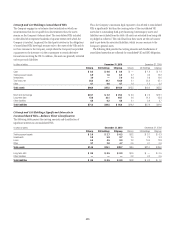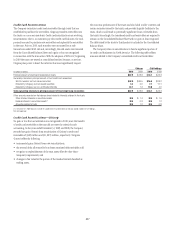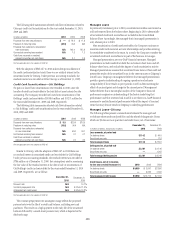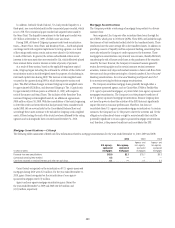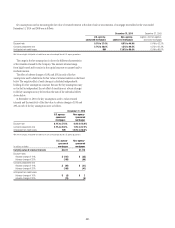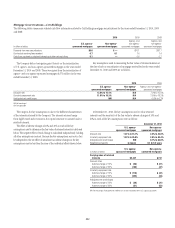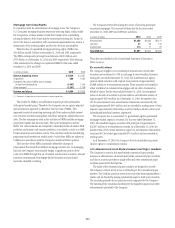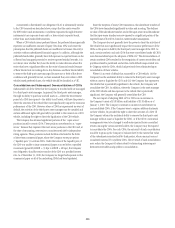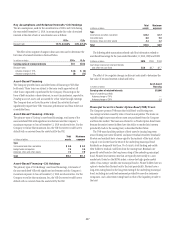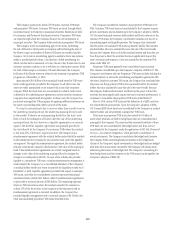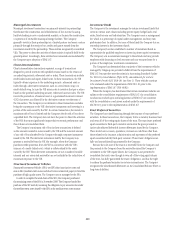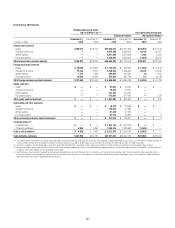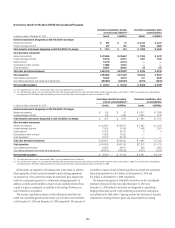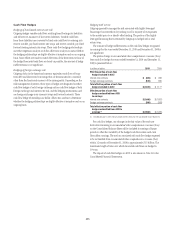Citibank 2010 Annual Report Download - page 248
Download and view the complete annual report
Please find page 248 of the 2010 Citibank annual report below. You can navigate through the pages in the report by either clicking on the pages listed below, or by using the keyword search tool below to find specific information within the annual report.246
A securitized collateralized loan obligation (CLO) is substantially similar
to the CDO transactions described above, except that the assets owned by
the SPE (either cash instruments or synthetic exposures through derivative
instruments) are corporate loans and to a lesser extent corporate bonds,
rather than asset-backed debt securities.
Where a CDO vehicle issues preferred shares, the preferred shares generally
represent an insufficient amount of equity (less than 10%) and create the
presumption that the preferred shares are insufficient to finance the entity’s
activities without subordinated financial support. In addition, although the
preferred shareholders generally have full exposure to expected losses on the
collateral and uncapped potential to receive expected residual rewards, it is
not always clear whether they have the ability to make decisions about the
entity that have a significant effect on the entity’s financial results because
of their limited role in making day-to-day decisions and their limited ability
to remove the third-party asset manager. Because one or both of the above
conditions will generally be met, we have assumed that, even where a CDO
vehicle issued preferred shares, the vehicle should be classified as a VIE.
Consolidation and Subsequent Deconsolidation of CDOs
Substantially all of the CDOs that the Company is involved with are managed
by a third-party asset manager. In general, the third-party asset manager,
through its ability to purchase and sell assets or—where the reinvestment
period of a CDO has expired—the ability to sell assets, will have the power to
direct the activities of the vehicle that most significantly impact the economic
performance of the CDO. However, where a CDO has experienced an event of
default, the activities of the third-party asset manager may be curtailed and
certain additional rights will generally be provided to the investors in a CDO
vehicle, including the right to direct the liquidation of the CDO vehicle.
The Company has retained significant portions of the “super-senior”
positions issued by certain CDOs. These positions are referred to as “super-
senior” because they represent the most senior positions in the CDO and, at
the time of structuring, were senior to tranches rated AAA by independent
rating agencies. These positions include facilities structured in the form
of short-term commercial paper, where the Company wrote put options
(“liquidity puts”) to certain CDOs. Under the terms of the liquidity puts, if
the CDO was unable to issue commercial paper at a rate below a specified
maximum (generally LIBOR + 35 bps to LIBOR + 40 bps), the Company
was obligated to fund the senior tranche of the CDO at a specified interest
rate. As of December 31, 2010, the Company no longer had exposure to this
commercial paper as all of the underlying CDOs had been liquidated.
Since the inception of many CDO transactions, the subordinate tranches of
the CDOs have diminished significantly in value and in rating. The declines
in value of the subordinate tranches and in the super-senior tranches indicate
that the super-senior tranches are now exposed to a significant portion of the
expected losses of the CDOs, based on current market assumptions.
The Company does not generally have the power to direct the activities of
the vehicle that most significantly impact the economic performance of the
CDOs as this power is held by the third-party asset manager of the CDO. As
such, certain synthetic and cash CDOs that were consolidated under ASC 810,
were deconsolidated upon the adoption of SFAS 167. The deconsolidation of
certain synthetic CDOs resulted in the recognition of current receivables and
payables related to purchased and written credit default swaps entered into
by Citigroup with the CDOs, which had previously been eliminated upon
consolidation of these vehicles.
Where (i) an event of default has occurred for a CDO vehicle, (ii) the
Company has the unilateral ability to remove the third-party asset manager
without cause or liquidate the CDO, and (iii) the Company has exposure to
the vehicle that is potentially significant to the vehicle, the Company will
consolidate the CDO. In addition, where the Company is the asset manager
of the CDO vehicle and has exposure to the vehicle that is potentially
significant, the Company will generally consolidate the CDO.
The net impact of adopting SFAS 167 for CDOs was an increase in
the Company’s assets of $1.9 billion and liabilities of $1.9 billion as of
January 1, 2010. The Company continues to monitor its involvement in
unconsolidated CDOs. If the Company were to acquire additional interests
in these vehicles, be provided the right to direct the activities of a CDO (if
the Company obtains the unilateral ability to remove the third-party asset
manager without cause or liquidate the CDO), or if the CDOs’ contractual
arrangements were to be changed to reallocate expected losses or residual
returns among the various interest holders, the Company may be required
to consolidate the CDOs. For cash CDOs, the net result of such consolidation
would be to gross up the Company’s balance sheet by the current fair value
of the subordinate securities held by third parties, whose amounts are not
considered material. For synthetic CDOs, the net result of such consolidation
may reduce the Company’s balance sheet by eliminating intercompany
derivative receivables and payables in consolidation.


